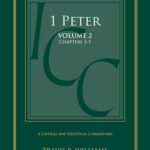Does Matthew 24 Describe the Rapture of the Church? (Part 3)
Read Part 1 of this series here. Read Part 2 here.
In the last installment of this series, we examined the argument (a convincing argument, in my opinion) made by John Hart in Evidence for the Rapture that Matthew 24:29–41 was not intended to portray future events in chronological order. Instead, as Hart argued, it appears that Matthew inserts a structural marker in 24:36 that indicates that Jesus is switching at that point to answering the other question asked by the disciples in 24:3. In other words, the topic switches somewhat in 24:36, and the chronological sequence begun in 24:4 and continued with verse 29’s “immediately after” is broken at verse 36.
This switch is important because a break in verse 36 would mean that Jesus could be describing the future arrival of the Day of the Lord, viewed from the outside as a package or complex of events, in verses 36 and following, rather than describing something that happens “immediately after” (v. 29) the tribulation described earlier in the passage.
But how do we know that this new topic introduced in verses 36 is the entire Day of the Lord, which, as a package, arrives without any prior signs like the Flood of Noah’s day or the destruction of Sodom and Gomorrah? Hart’s first argument regarding the switch from signs to non-signs pointed in this direction, but is there additional evidence? This question leads to Hart’s third argument.
Argument #3: “That Day and Hour” (v. 36)
In the Olivet Discourse, our Lord does not use the phrase “Day of the Lord” as Paul does in 1 Thessalonians 5. However, he does use the phrase “that day or hour” (τῆς ἡμέρας ἐκείνης καὶ ὥρας) in verse 36. That specific “day or hour” is the new topic introduced in verse 36. While Jesus has earlier referred to “days” plural (vv. 19, 22, 29), here he begins speaking of a specific “day” in the singular (see also 24:42, 50; 25:13). Hart agrees with most commentators that the specific day (“that day”) being referred to by Jesus in verse 36 is the Day of the Lord referred to frequently in the OT prophets (e.g., Zeph 1:7–15). So, it is the same “day” that Paul is referring to in 1 Thessalonians 5:1–3 as the “Day of the Lord.” Both prophets, our Lord Jesus and his apostle, describe this coming “day” as something that will arrive suddenly and without prior signs, so they compare it to a “thief” (Matt 24:43; 1 Thess 5:3).
At this point, Hart quickly introduces Revelation 3:10 (“I will also keep you from the hour of trial that is going to come on the whole world to test the inhabitants of the earth,” NIV), which is itself another hotly debated verse! However, arguably, it could be using “hour” in the same fashion as the “hour” in Matthew 24:36. That is, “hour” and “day” are both ways that Jesus refers to the entire complex of events that the OT prophets called the “Day of the Lord.” It is a very long “hour” or “day”!
Implication of Arguments #1–3
At this point, it might be helpful to pause and reflect on the three arguments made to this point.
Scholars often point out that the pretribulational position, at least how it is often presented, appears to teach two Second Comings of Jesus. At times, pretribulational teachers will try to use terminology precisely and refer to the rapture and the Second Coming as two separate events. However, the NT does not appear to demonstrate this same distinction, at least in its terminology. For example, the disciples ask about Jesus’ “coming” in Matthew 24:3 (“your coming,” τῆς σῆς παρουσίας), Jesus describes his very visible “coming” in Matthew 24:27 (“the coming of the Son of Man,” ἡ παρουσία τοῦ υἱοῦ τοῦ ἀνθρώπου), and this same “coming” is ostensibly referred to again in 24:37 and 24:39 (“the coming of the Son of Man,” ἡ παρουσία τοῦ υἱοῦ τοῦ ἀνθρώπου).
So, if the NT seems to refer to this “coming” here and in many other places as a singular event, is it legitimate for us to speak of different events within that one “coming,” even events that might be separated by years?
Hart’s arguments, to this point, would support a “Yes” to that question. We can speak of the one “coming” of our Lord Jesus, what we refer to now as his Second Coming, since he has already been here once before, but we can also distinguish between various events that will occur as part of that “coming” (παρουσία or parousia). We can speak of the entire “coming,” when our King will again make his presence known here on earth in a special way, as a singular event. This would be like me saying that I am looking forward to summer coming (I am, and it is only March!). But the NT writers also seem to refer to specific things that will occur within that complex of events. For example, while discussing our Lord’s Second Coming (τῆς παρουσίας αὐτοῦ, 2 Pet 3:4), Peter says that at the “day of the Lord,” “the heaven will disappear with a roar, the elements will be destroyed by fire, and the earth and everything done in it will be laid bare” (2 Pet 3:10). So, for those of us who are premillennial, Peter seems to include an event within the “coming” (παρουσία) or Day of the Lord that we know from Revelation 20–21 will occur 1,000 years following our Lord’s return to earth. This would be like me referring to something that will occur during my coming summer, like a church Labor Day picnic, even though I know it will be removed in time from things such as Memorial Day, which will kick off the whole complex of events that might be called “my summer.”
Jesus “coming on the clouds of heaven” (τὸν υἱὸν τοῦ ἀνθρώπου ἐρχόμενον ἐπὶ τῶν νεφελῶν τοῦ οὐρανοῦ) in 24:30 is arguably not the only thing that will occur during this Day of the Lord or παρουσία and need not be the first thing. If what we call Jesus’ First Coming stretched over decades, could not his return, which is similar but greater, also stretch over many years? Hart, so far, has made a very plausible case that (1) the switch from signs to non-signs, (2) the structural marker at the beginning of verse 36, and (3) the switch to describing the singular “day” all indicate that, at verse 36, Jesus switches from describing his “coming” internally to describing it externally. Therefore, the things that Jesus describes in verses 40–41, while part of that one Second Coming of Jesus, might precede in time the things described in verses 15–31, which occur within that same Second Coming of our King.
Read Part 4 here.




Ryan, thank you for this series of posts. I came to the conclusion about the coming of Christ being a complex event that begins with Christ coming for his own in the rapture and concludes with his coming to earth with his own. I think this makes good sense as well of the Day of the Lord as Christ coming in judgment. It also, as you noted in an earlier post, helps harmonize the statements that indicate Christ could return at any time. Finally, I think it helps us look forward to the return of Christ as the next great redemptive-historical event.
One suggestion that I’d welcome feedback on. I’m growing increasingly convinced that the day of the Lord that 2 Peter 3 is describing is the Tribulation period. I’m not sure that the text of 2 Peter 3 requires the dissolution of the cosmos, and some of the language there is very similar to language at the end of Revelation 6 and in other places in Revelation.
Good to hear from you, Brian! Thanks for the comment and question. Since, as you say, the Day of the Lord or parousia includes judgment, I do believe that it includes the Tribulation judgments described in Revelation 6 and following. I just wonder if Peter, in this context, is focusing more on the culmination of that time of judgment when the new heavens and new earth finally appear (see esp. 3:13) because he is emphasizing the final judgment in store for false teachers. When he talks of the heavens “passing away” in verse 10, it seems to be parallel to Jesus’ statements about this present world in Matt 5:18 par and 24:35 par, and his statement regarding the “generation” (or evil family) in 24:34 par. It is a transformation into something new, similar to what has already occurred for those of us who are in Christ (2 Cor 5:17). As Heibert says concerning 2 Pet 3:10, it “does not assert annihilation but rather suggests the passing of the heavens from one state of existence to another, in that their form and structure change radically.” Perhaps we could compare it to one of those TV shows where the house is receiving a “makeover,” and there is some connection between the old house and the new, but it also could be described as a completely new house! There will be radical changes brought to the world earlier in the Day of the Lord, but it seems, at least to me, that Peter is focusing on the arrival of the final product (and the consequences for unbelievers at the final judgment) as in Revelation 21:1 (see related verb for “pass away” there).